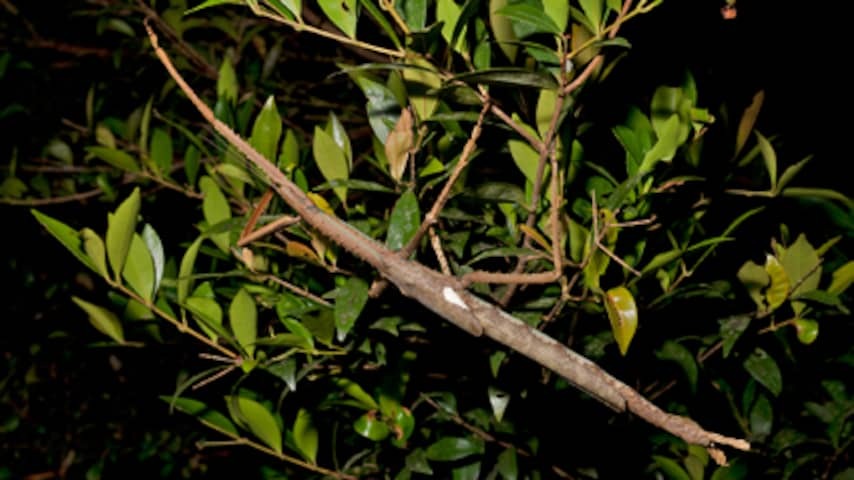
In Australia, a huge stick insect measuring 44 centimeters long has been discovered. The insect weighs almost as much as a golf ball, potentially making it the heaviest insect in Australia.
The stick insect, with the Latin name Acrophylla alta, was discovered in the high-altitude rainforests of Northern Australia. Researchers Angus Emmott from James Cook University and wildlife expert Ross Coupland discovered the insect and published their findings in the scientific journal Zootaxa.
The discovered stick insect lives high in the treetops of the rainforest, making the species difficult to find. “You have to wait until, for example, a bird drops one down or until there is a heavy storm and they are blown over,” says Emmott to the Australian press agency AAP. Their habitat could explain why this species is so large. According to Emmott, this could help the species survive in the “cool, wet environment in which they live.”
According to the researcher, a message on social media contributed to the discovery. Co-author Coupland received a photo of a stick insect and immediately thought “it could be something new,” says Emmott to The Guardian. After nights of searching, they found a female specimen themselves. They took her home, fed her, and examined her eggs. Egg examination is the way to determine if it is a new species in stick insects.
The stick insect is strikingly large and heavy. Weighing 44 grams, the female stick insect weighs much more than the current heaviest insect in Australia: the giant wood moth. That insect can weigh up to 30 grams. “The females have wings, but their heavy bodies mean they are not really good fliers,” says Emmott.
Looking for a Male
The next step is to find a male. Then the insect can also get a non-Latin name. Finding a male can be challenging, as they are not easily recognizable as the same species as the female. “You have to find the male when it mates with the female,” says Emmott. “Then you know what it is. And if you collect the eggs, you can determine that it is one and the same species.”
The insects are difficult to find anyway, because they look like branches and sit still during the day to avoid being eaten by birds. That is why researchers have the best chance of finding them by trekking into the rainforest at night with headlamps.
According to Emmott, there are still many insect species to be discovered in the rainforests of Queensland. “Here in the tropics, in Northern Australia, we have so many insects that have not yet been described.”